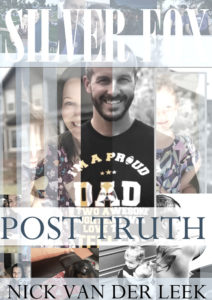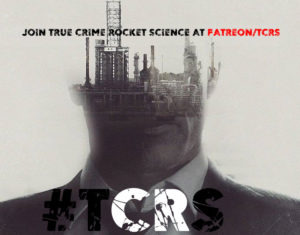The chapter in Malcolm Gladwell’s book TALKING TO STRANGERS dealing with Amanda Knox is Chapter 7 of 12 chapters, in Part 4 of 5 parts. As the chapter itself admits, it’s a “short” explanation of the Amanda Knox case. And that’s the problem. In a case spanning four years and four separate hearings [between November 2007 and October 2011], five pages hardly does the Amanda Knox case justice.
I’ve written six books on the case, with two to go. That’s two trilogies. This blog post on it’s own [and it will be one of several on the same subject] is likely as long if not longer than Gladwell’s chapter on Knox. It’s impossible to give this case a fair airing in a single “short” chapter. Even in that chapter Gladwell provides other cases, including Bernie Madoff and someone he refers to as “Nervous Nelly”.
And Gladwell* admits at one point:
I could give you a point-by-point analysis of what was wrong with the investigation of Kercher’s murder. It could easily be the length of this book…But instead, let me give you the simplest and shortest of all possible Amanda Knox theories. Her case is about transparency.
Gladwell is an expert at thin-slicing, and arguably a craftsman at keeping things short, sweet and succinct. For my part I’ve bought, read and enjoyed several of Gladwell’s books.
The problem here, dealing with this particular subject matter, is that brevity becomes reductionist. Short becomes not only simplistic, but grossly oversimplified. What Gladwell’s done here is basically taken the veneer of the mainstream media version of Knox’s story, the generic Wikipedia version, and adopted it seemingly at face value. He may have Googled a few other sources, and did some background reading, but then figured, he’s figured it out, let’s stick to the basics and not confuse the audience.

True Crime sets a high bar for truth-telling, and though Gladwell means well, it’s questionable whether he succeeds in clarifying the Knox case or contaminating it even more than it already is.
Bear in mind, his book isn’t a book on the Amanda Knox case, it’s a book about something else, and the Amanda Knox case is just one short chapter on the way to making his points about effective discourse with strangers.
In this series True Crime Rocket Science will evaluate Gladwell’s assertions on Knox. In itself, Gladwell’s “thin-slicing” of the Knox case is fortuitous – it’s an excellent summary of the mainstream narrative and what’s wrong with it. It also shows how in our haste to make our “expert” opinions known, we are tempted to cherry pick the low hanging fruit that suits our own confirmation bias. True crime can’t be rushed, and complex criminal cases shouldn’t be treated like a convenience store for civil intertextuality.
You get intertextuality within crimes, and that’s one thing, but there be dragons when you start to assume murder suspects are innocent and they are then recruited as part of a PR effort to promote some sort of cerebral agenda. It would be like conflating Stephen Avery with the plight of the poor – just don’t do it. Leave true crime out of it. It’s a separate discipline.
If Gladwell is a cognitive specialist, the Amanda Knox case is the epitome of a case, and a character, that is anything but cerebral.
From Vocabulary.com:
Cerebral people use their brains instead of their hearts.
I don’t mean that the case itself isn’t challenging, I mean the personality and the character of Amanda Knox, as it relates to the Murder of Meredith Kercher, is anything but cerebral. Knox’s book Waiting to be Heard is exhibit A in confirming someone who was trying to live it up, as most students do.
Chocolate festivals, sex, Halloween parties [and not being invited to them], boyfriends [and being passed over by someone you fancy living downstairs in favor of her housemate], smoking marijuana and then stepping the recreational drugs up a gear.
The most cerebral aspect of Knox’s existence in 2007 was Harry Potter. She read it in English, German and at the time of the murder, was trying to read The Deathly Hallows in Italian. Even in her choice of boyfriend, Knox selected Raffaele Sollecito because he resembled her hero Harry Potter.
Instead of carrying a wand and being interested in magic, Sollecito was a knife freak, who was into violent manga and cocaine. In today’s parlance we’d think of the young Italian as an incel. He was closer to an Elliot Rodger than Harry Potter, and Knox herself – loud, boisterous and promiscuous – was no Hermione.
This is what I mean by “the personality and the character of Amanda Knox, as it relates to the Murder of Meredith Kercher, is anything but cerebral.”
But let’s deal with the cool intelligence of Gladwell as he writes about the case. We’ll assume, as a thought leader, he became a scholar of the case, and we’ll test his application of his research through the prism of True Crime Rocket Science.

1. Someone was caught = case closed?
It seems ridiculously obvious doesn’t it? The black guy did it, so what’s the fuss about Amanda Knox anyway?
This is what’s known as being reductionist in true crime. Similar arguments have been made against the West Memphis Three, the three youths accused of brutalizing, torturing and murdering three eight-year-old boys. Why did three youths have to be guilty? Why couldn’t it be just one, or for that matter, anyone? Curiously, one of those youths found guilty and then acquitted in the West Memphis Three case appeared on the same stage to proclaim his innocence as Amanda Knox.

Interestingly, in the West Memphis Three case, one of the main challenges to the prosecution’s case is also a black person as a “possible alternate suspect”.

It should be noted, in the trials of Amanda Knox, as well as those of the West Memphis Three, Knox and Damien Echols both were charged with two sidekicks, and both received the harshest sentences. Both were implicated as ringleaders within a trio of suspects.
So Gladwell’s very first sentence in his chapter implies that because some person was caught and charged, Knox is off the hook. In theory, he could have stopped at that sentence and gone on to the next chapter.
There are many cases involving accessories to murder, one of the most famous – but never proved, nor tested in a court of law – was JonBenet Ramsey. JonBenet’s parents were found by the Grand Jury to be accessories after the fact to the a third party.

So even that case involves a potential trio – of accessories and a perpetrator. I could go on, but let’s get back to Gladwell. Nowhere that I can see, does Gladwell provide the most obvious thin-slicing. What’s the first thing one does when establishing the possible involvement of a potential suspect? What’s the first and best way to exclude a potential suspect of a crime? You find out whether they have an alibi. It’s not rocket science. And so you need two pieces of information. When did the victim die, and where was the suspect at this estimated time of death?
2. True Crime 101: Be Precise About Time of Death
I love the way Gladwell uses the most indirect language to skirt around this issue. He doesn’t write: “At 22:11 Rudy Guede murdered Meredith Kercher. At that time, Amanda Knox and her boyfriend Raffaele Sollecito to were – WHERE EXACTLY?”
Instead Gladwell uses pretty clumsy English – for him.
“On the night of…Meredith Kercher was murdered by…”
Murdered by? I’m not sure when last I’ve heard those words. X murdered Y. It’s never a case of X was murdered BY Y.
By being this vague about the timing, Gladwell’s also vague about the date. November 1 was a holiday in Italy. It meant, on that day, most of the students in Perugia where Knox was attending college were away, visiting their parents over a long weekend. This meant it was only Knox and Kercher in the house, no one else. They were the only expats. And what do university students – especially expats – tend to do over long weekends?
In his next sentence, Gladwell juxtaposes mountains of speculation [what’s argumentation?] and controversy with the certainty of Guede’s guilt. Yes, Guede’s guilt is certain. He left his feces in the toilet bowel, and a bloody handprint on the wall above Meredith Kercher’s bed. He also left a series of shoeprints when he bolted from Meredith’s room down the hall and out the front door.


And this is where the rubber of True Crime Rocket Science hits the road. Look at the image of Guede’s shoe trail. What do you see? You don’t see anything. If you’d entered the house, as Knox claimed she did, at face value you wouldn’t see any blood. That’s a problem.
3. Where’s the blood, and why is so much of it a washed-out pink?
The original crime scene in Meredith’s bedroom was a bloodbath. Meredith throat was gashed deeply in two places, and she was also cut or stabbed seven times and had sixteen bruises on her body.
As Knox herself said: “She fucking bled to death…” When that happens, there’s a lot of blood. And there was. Arterial blood sprayed everywhere, and yet the crime scene had a weird combination of thick pools of blood, and pinkish transparent streams of diluted blood.
There was also a weird combination of the grotesqueness of the crime itself, and the fact that Meredith’s murderer had thoughtfully placed a duvet over her body, then closed the door behind him [or her], and locked it.
Somewhere in Gladwell’s “mountains of controversy” there are a few good reasons. Thin-slicing the evidence around Guede, we see if he was the only murderer, and if he beat a hasty retreat, then why did he fail to leave clear shoeprints in Meredith’s blood? He’d left a finger smear on the wall, and clearly more blood had to have sprayed onto his trousers and pooled onto the floor, so it was more likely he’d leave a trail of shoeprints. So why aren’t they there? Why, instead, are there various other footprints and shoeprints laid into the blue bathroom mat and in a shoe Guede didn’t even own?
So we have a situation here where it appears someone spent time cleaning up the crime scene – not only inside Kercher’s room, but in the hallway. Guede’s shoeprints left in Meredith’s blood were mostly wiped away, but not completely. Why weren’t they clearly visible, bright, and solid? After all, blood in a situation like this, where someone’s neck is cut open, is thick and scarlet. Think about Nicole Brown. So much blood flowed out of her it traveled down the garden path and dripped onto the sidewalk.

We won’t go into detail here about the blood evidence, or the mixed DNA traces, but it’s extensive. There’s an orgy of evidence.
4. “I wasn’t there” vs “Of course my DNA was there, I lived there”
Knox often refers to this aspect dismissively, saying there’s no evidence of her in the crime scene. She seems to be referring to Meredith’s room when she says that. As if the crime scene begins and ends inside Meredith’s room.
From EW.com:
Knox’s lack of DNA in Kercher’s room was no fault of her own. According to Knox, cleaning DNA is not one of her specialties. “That’s impossible. It’s impossible to see DNA, much less identify whose DNA it is.”
It’s not impossible to see DNA. If blood is lying on the ground, DNA is in that blood lying on the ground. If you clean up the blood, you clean up the DNA.

When asked about her DNA in Meredith’s blood elsewhere in the house, Knox is equally dismissive.
“Of course my DNA was there. I lived there! We lived together for months…”

5. Shady Character/s
Now let’s deal with Guede. Gladwell accuses Guede of being a “shady character” but doesn’t explain why. He mentions Guede having a “criminal history”, but doesn’t say what for.
So let’s answer that. Guede was drug dealer. He was said to be involved in several break-ins, but these were so petty, even when he was caught, the police didn’t press charges. More pertinently, Guede was a fairly frequent visitor to the house where Meredith, Knox, and the Italian boys downstairs lived. He played basketball with the guys, and sometimes smokes joints with the girls. On at least one occasion Guede got so high he fell asleep in the bathroom of the villa.
Gladwell is right to observe that Guede had been hanging around the house, but he should be more explicit that he also hung around inside it. On one occasion he went out clubbing with them. In this scenario, where Guede is a fairly frequent companion to the residents of the villa, it suddenly becomes less preposterous that there might be a crime involving more than one person.
We’ve also got to link Guede to Knox’s Italian boyfriend. How do we do that? Actually, it’s pretty simple. How did one link Guede to any university student?
In July 2014 the Telegraph reported on a cocaine dealer who Knox met on a train and had sex with, while her younger sister was traveling with her through Italy [and just prior to her commencing her studies in Perugia]. Guess what? This cocaine dealer wasn’t Rudy Guede, it was someone else.
Amanda Knox was reportedly having sexual relations with a cocaine dealer…Reports of Ms Knox’s drug dealing connections were not mentioned at her murder trials in Italy, but the Italian crime magazine Giallo has reported that in January 2008, police investigators wrote that she had had a relationship of a “supposedly sexual nature” with a man they refer to as ‘F’, who had sold drugs to the US student.
Giallo wrote that ‘F’ was a psychology student from Rome who met Ms Knox on a train from Milan to Florence and shared a joint with her. His number was later found on Ms Knox’s cell phone and Giallo said he had been in contact with her frequently, before and after the slaying of Ms Kercher.
Source: The Telegraph.
What we have here is a precedent for Knox and Sollecito to require the drug peddling services of Guede. And if he was a shady character, and they were actively using his services, what does that say about their characters?
When Gladwell refers to Guede hanging around the house Knox stayed in, why was he hanging around? Well, what about to do his trade with them, as he was doing with the student population in general?
Gladwell portrays Guede as a stranger to Knox, but that’s a mistake. It’s even possible Knox was either sleeping with Guede, or infatuated with him.
Source: The Education of Amanda Knox, from thestranger.com

6. Fleeing the crime scene
Gladwell finishes off his opening gambit linking the discovery of Kercher’s body to Guede fleeing to Germany [where, as it happens, Knox’s aunt also lived].
Now, to be clear, all of Meredith’s British friends fled Perugia. They cut short their studies and decamped back to Britain. But Knox wanted to stay. Everyone in the villa had to move out following Meredith’s murder, but Knox wanted to continue staying there. In fact, Knox was bummed out that she’d just paid the rent and now wasn’t going to get anything for it. Knox wanted her life to go on business as usual, even though someone in the room next door to her had been brutally murdered.
Gladwell might dismiss this as simply quirky, but most right-thinking people would realize something more was amiss. This isn’t just goofy behavior, although the goofy behavior is relevant. It’s more goofy than everyone else, why is that? And what might this goofiness have to do with her street cred, and her attitude to…say…alcohol use [as a 21-year-old American] and her proclivity to recreational drug use, and sex?
When Guede went to Germany, a friend of his got hold of him on Skype and had a conversation. This is an extract of that conversation.
GUEDE: I’m afraid. But I don’t want to stay in Germany, I’m black and if the police catch me I don’t know what they might do to me. I prefer Italian jails. In the newspaper they’re writing that I was drunk and slept on the toilet. That’s crap. In that house we were smoking joints, we smoked and so did those girls, everyone did. After that I said to the guys, who are men of their word, “Listen, guys, I’m tired, I can’t walk now, can I sleep over here?” So I slept on their sofa. I was only ever at their place twice. After that, after that I met Amanda, but I didn’t talk to her any more, I just saw her one other time, at that pub, at Lumamba’s pub, whatever his name is.
GIACOMO: Right, Lumumba.
Slipping ahead.
GUEDE: Listen to this [Guede is reading from a newspaper], “Meredith’s clothes were put in the washing machine. When the police came to the house it was still full, the girl’s clothes were wet”, so if that really did happen, Amanda or Raffaele did it. Do you understand? That must have been them, if it really happened.
GIACOMO: Why would they have done that?
GUEDE: Because when I left she was dressed, see?
GIACOMO: Meredith? The girl who died?
GUEDE: But Meredith was dressed.
GIACOMO: So they killed her dressed?
GUEDE: Yes, but it says here that they were washed in the washing machine, but it’s not true, she was dressed, she had a pair of jeans on and a white shirt and a woolen thing. She was dressed.
GIACOMO: All right, and that…
GUEDE: This means that they washed them, Giacomo. I left [the house], and that guy [quello] must have left that house and…
GIACOMO: But what the hell did Amanda go wash the clothes for?
GUEDE: How the hell do I know?
Read the rest of the transcript here.
There’s also something else that’s interesting. When Knox was arrested, she implicated another black man as being at her apartment. Her boss. According to that confession she was with this black man while he was in the room with Kercher. What are the chances Knox would know that Meredith’s killer was black person before anyone, before the rest of the world did?
And further, if Guede was at the villa, and Knox knew about him, why wouldn’t she tell the police about him, rather than her boss, was a married father who had never been to her home to begin with?
In Episode #2 TCRS will deal with Gladwell’s version of the police investigation into Knox and Sollecito, including his version of the forensic evidence.
*Malcolm Gladwell. Talking to Strangers (Kindle Locations 1975-1983). Little, Brown and Company.













Recent Comments